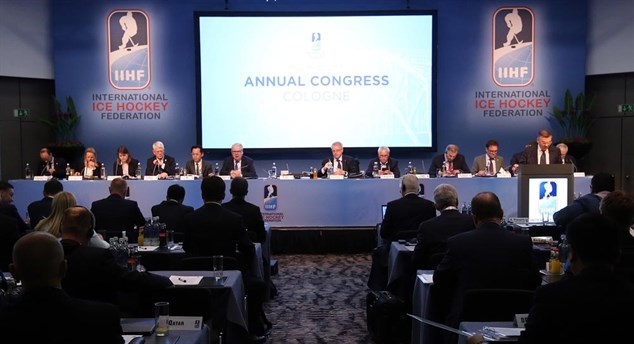
The 2017 IIHF Annual Congress approved the adjustments of several regulations. Photo: Andre Ringuette / HHOF-IIHF Images
Also shootout format adjusted for 2018
The 2017 IIHF Annual Congress approved several changes in regulations including for the overtime and shootout procedure as of next season.
While there were several housekeeping changes at various regulations, there were also changes to the IIHF Sport Regulations to adjust the overtime and shootout operations as of the 2017/2018 season.
Based on the feedback of the participants, teams will in the future not change ends for the overtime period but use the same ends like in the third period to have a shorter skate from their end for a line change especially considering that a three-on-three overtime is challenging enough.
In round robin and preliminary-round games, a 3-on-3 overtime period of up to five minutes will be played following a three-minute intermission during which time the ice will be shovelled.
In playoff games and the bronze medal games, the same procedure applies but with the overtime period of up to ten minutes and 4-on-4 players.
The gold medal game will continue to have an overtime period of up to 20 minutes if the game is tied but instead of a 5-on-5 overtime as until this season it will be a 4-on-4 overtime as of the 2017/2018 season following a 15-minute intermission including ice resurfacing. This to increase the likeliness of a goal being scored during overtime given that the gold medal is at stake.
Also the penalty-shot shootout procedure was amended. As of the 2017/2018 season the procedure will begin with five different shooters from each team followed by tie-breaking shots if the teams are tied after five rounds of shots. Until now it was three shooters in round robin and preliminary round games and five shooters in playoff and medal games.
This change was done to ensure that it requires more successful attempts to win a game making it more of a team effort and to increase the excitement for the audience.


